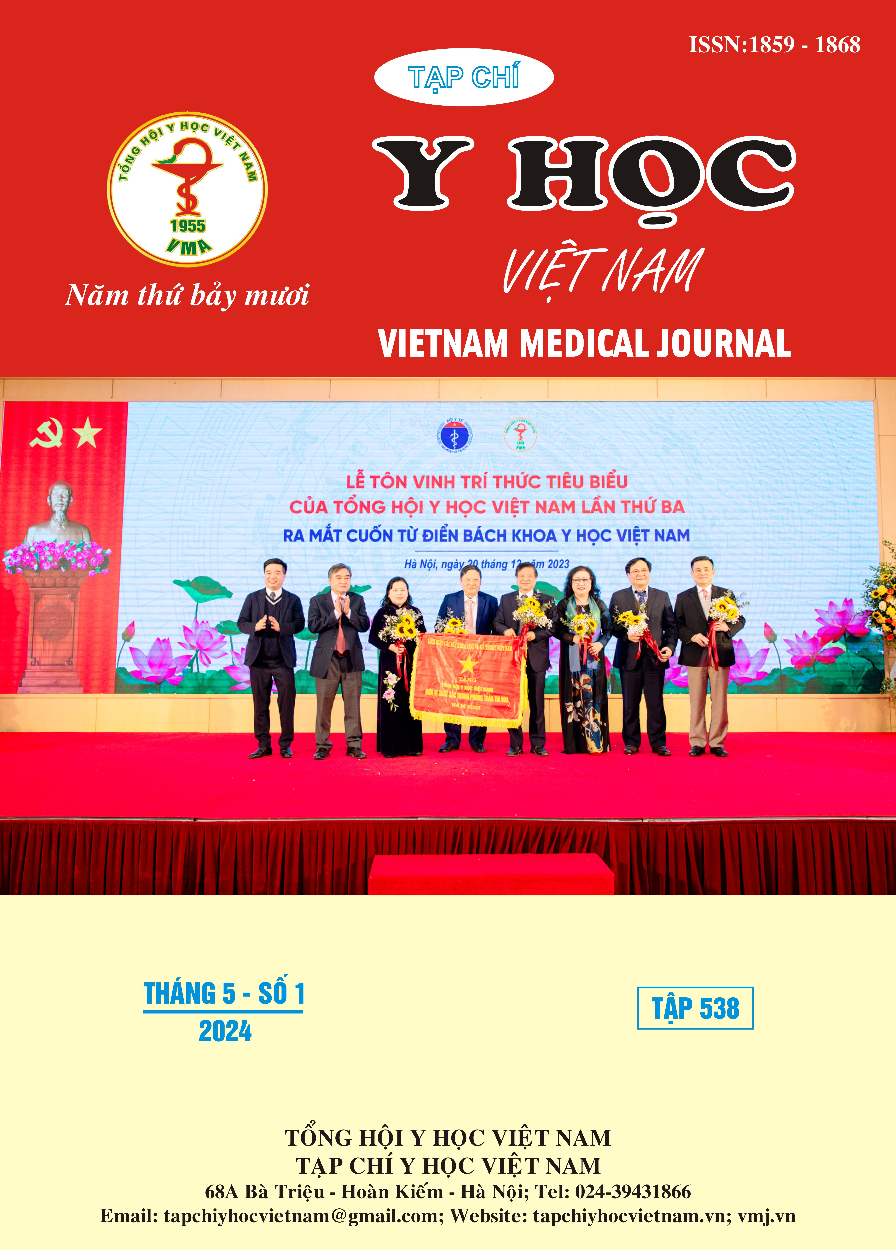EVALUATION OF FACTORS ASSOCIATED TO COMPLICATIONS AFTER LAPAROSCOPIC TRANSABDOMINAL PREPERITONEAL FOR INGUINAL HERNIA REPAIR
Main Article Content
Abstract
Laparoscopic surgery with transabdominal preperitoneal mesh placement (TAPP) has been the primary choice for inguinal hernia treatment. This method has been approved to be safe with a low complication rate. This study was conducted to evaluate preoperative risk factors that may contribute to an escalation in immediate and distant complications in patients undergoing TAPP surgery. For patients undergoing TAPP surgery, the incidence of intraoperative complications was 3.8%, and the failure rate was 1.9%. Postoperative complications occurred in 10.5% of patients. Complications within the first month predominantly included fluid accumulation (15.4%), while pain and sensory disturbance in the abdominal region were observed in 26.9% during the follow-up of distant complications. Multivariate logistic regression analysis revealed that overweight patients (BMI > 24.9 kg/m2) were more likely to experience postoperative complications at one month (OR=3.2; p=0.03) and distant complications (OR=2.4; p=0.02) compared to the normal-weight group (BMI<24.9 kg/m2). Postoperative complications are generally mild and can often be managed conservatively, primarily involving pain and sensory disturbances in the abdominal region. The current study also highlights that overweight and obesity are risk factors contributing to an increased incidence of postoperative complications, emphasizing the need for thorough counseling regarding these risks for patients.
Article Details
Keywords
Inguinal hernia, TAPP, synthetic mesh placement.
References
2. Trương Đình Khôi, Phẫu thuật nội soi TAPP điều trị thoát vị bẹn; 2021.
3. Köckerling F., Bittner R., Jacob D., et al. TEP versus TAPP: comparison of the perioperative outcome in 17,587 patients with a primary unilateral inguinal hernia. Surgical Endoscopy. 2015;29:3750-3760.
4. Phan Đình Tuấn Dũng. Nghiên cứu ứng dụng phẫu thuật nội soi ngoài phúc mạc với tấm tưới nhân tạo 2D và 3D trong điều trị thoát vị bẹn trực tiếp. 2017;
5. Garg P., Rajagopal M., Varghese V., Ismail M.. Laparoscopic total extraperitoneal inguinal hernia repair with nonfixation of the mesh for 1,692 hernias. Surgical Endoscopy. 2009;23:1241-1245.
6. Kumar S., Wilson R., Nixon S., Macintyre I.. Chronic pain after laparoscopic and open mesh repair of groin hernia. British Journal of Surgery. 2002;89(11):1476-1479.
7. Simons M., Aufenacker T., Bay-Nielsen M., et al. European hernia society guidelines on the treatment of inguinal hernia in adult patients. Springer; 2009. P. 343-403.
8. Aiolfi A., Cavalli M, Del Ferraro s, et al. Total extraperitoneal (TEP) versus laparoscopic transabdominal preperitoneal (TAPP) hernioplasty: systematic review and trial sequential analysis of randomized controlled trials. Hernia. Oct 2021;25(5):1147-1157.
9. Phạm Văn Thương, Nguyễn Văn Sơn. Đánh giá một số yếu tố nguy cơ ảnh hưởng đến kết quả phẫu thuật Lichtenstein điều trị thoát vị bẹn ở người cao tuổi. Tạp chí Y học việt nam. 2023;525(1b)
10. Nienhuijs S., Staal E., Strobbe L., Rosman C., Groenewoud H, Bleichrodt R.. Chronic pain after mesh repair of inguinal hernia: a systematic review. The American Journal of Surgery. 2007;


